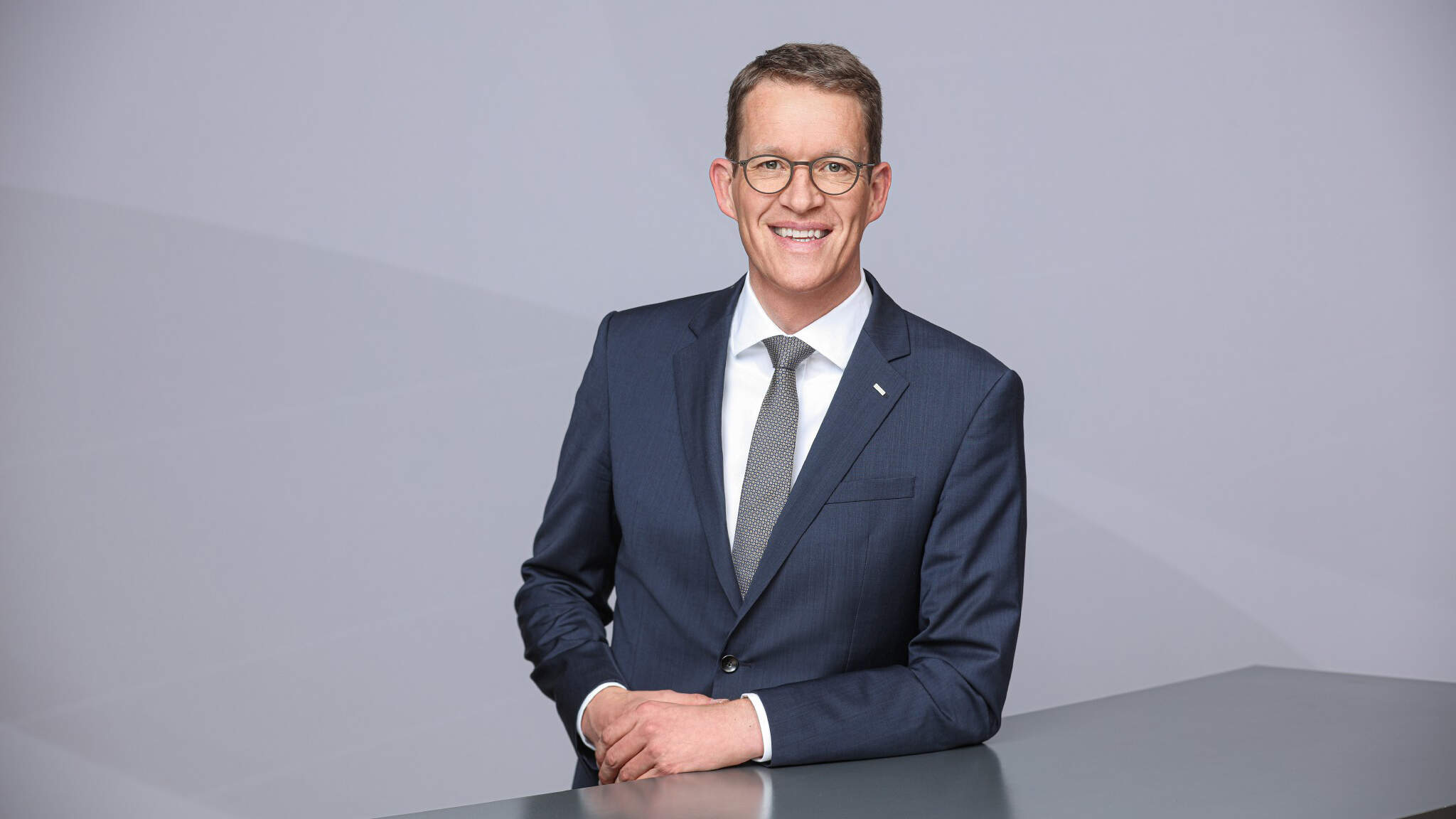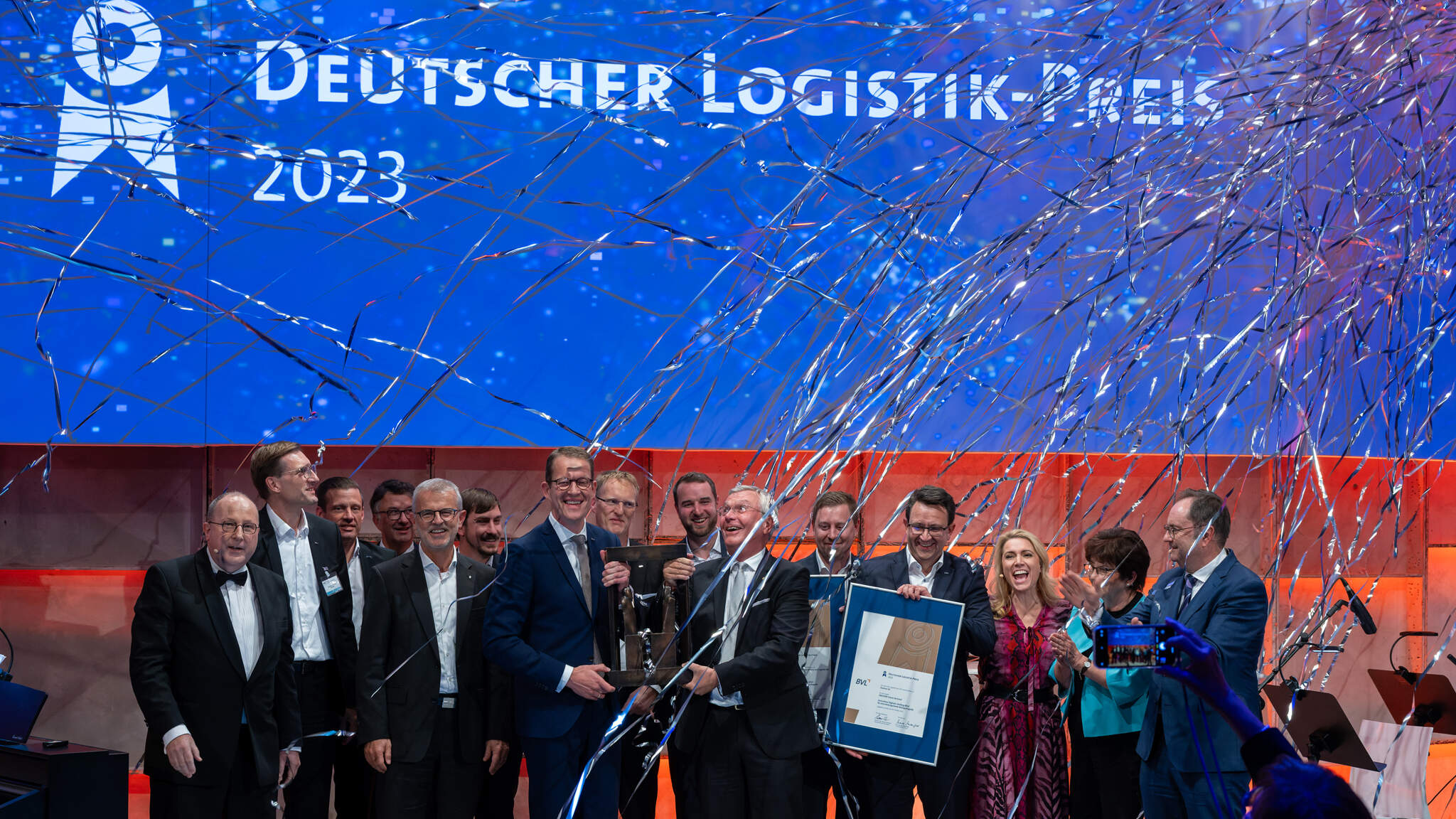Long live the (r)evolution!
How does DACHSER turn innovation into a driver of constant renewal? An article by CEO Burkhard Eling provides insights and outlooks.

Innovation is literally on everyone's lips. Hardly any other term is so influential for the corporate reality of today and the expectations of the future. When I entered the search term „innovation“ into Google in preparation for the Innovative Leaders Conference, I was initially shown almost 2.5 billion German-language hits in less than half a second. A few weeks later, it was already 2.6 billion, 100 million more. This leads directly to the question of what actually constitutes an innovation. It can be anything from a small change to a product to a disruption that turns everything we've known upside down. After all, there is only one letter between evolution and revolution.
The term innocation has its origins in the Latin "innovare" and means innovation or renewal. It therefore refers to the change or further development of something that already exists. The economist Joseph Schumpeter brings another, more radical perspective into play: "Creative destruction is the basis for innovation, entrepreneurial growth and prosperity."
That sounds contradictory at first: How can destruction be creative? The starting point is to question the status quo. How does my situation fit in with the prevailing framework conditions and what do I need to do to adapt to them and keep reinventing myself? There are two "creative" ways to do this: an evolutionary one involving many individual, gradual improvements. Or a disruptive, revolutionary path that entails a comprehensive reset. At DACHSER, we always think of these types of creative destruction in a relatively broad context.
How do you become a good ancestor?
DACHSER as a family business has always focused on thinking in terms of generations. What we do today benefits the next generation. What we reap today was sown by a previous generation. In his book "The Good Ancestor", the Australian philosopher Roman Krnzaric impressively summarizes the connection between generations: we mostly know our own grandparents and we know our grandchildren. As individuals, we therefore have an overview of a series of five generations. From the birth of our grandparents to the death of our grandchildren is a span of up to 250 years, with which we as individuals are directly connected and therefore also have responsibility for each other.
DACHSER as a family business has always focused on thinking in terms of generations. What we do today benefits the next generation. What we reap today was sown by a previous generation.
For us at DACHSER, this is a strong driving force: what we do today makes a difference for the next generation. And at the same time, we sometimes feel like parents and fledgling children sitting together at the kitchen table. Some may feel that time is moving too fast, while for others it is not fast enough. One solution can be to question the framework conditions, the opportunities and risks. This can lead to development - and constructive cooperation in the sense of joint progress. At the right speed and dynamic for everyone.
How do we do this? The most visible expression of our development and growth is DACHSER's more than 11,000 trucks on the road. We use them to expand our network. As number 1 in Europe when it comes to general cargo. And as a global player in logistics. After our recent acqusitions we have about 38,000 employees at more than 400 locations worldwide and are represented by our own companies in 43 countries.

Long-term thinking, entrepreneurship and an unparalleled network
As a family business that has been on the market for almost a hundred years, we need appropriate strategies in our operational business that enable the company to recognize changes in our volatile, uncertain and complex environment at any time and react accordingly. At Dachser, we essentially rely on three pillars:
1. the intrinsic interest of family businesses to think in long lines - from generation to generation.
2. entrepreneurship and the courage to innovate: this is the DNA of our family business.
3. the ability to form networks - and to constantly renew ourselves from within according to the principle of self-organization.
Let's take a closer look at DACHSER as a family business: Founder Thomas Dachser started out in 1930 transporting cheese from the Allgäu region to the north of Germany. On the way back, the truck was loaded with industrial goods. The result was a logistics chain that became the number 1 in European general cargo logistics. The basis was a clear focus on this one business model, which was further developed over generations and successfully implemented worldwide in the best possible integrated networks.
The prerequisite for such healthy growth is created by clear and outstanding governance, which not only holds the family business together, but also offers it a clear orientation and future prospects. The family, the Management Board and the Supervisory Board therefore always have a clear idea of where the company is heading and what needs to be done and invested to achieve this.
Let's move on to the second pillar: perhaps the most important value at DACHSER is "entrepreneurship and the courage to innovate". Our branch managers act as entrepreneurs, are close to the customer, know their employees inside out and identify strongly with DACHSER. Our individual entrepreneurs thus become seismographs for the development of the markets - on both a small and large scale. They reflect this experience directly into the network and seek exchange with others.
This creates the conditions for us to have access to more than just a small circle of colleagues who think up innovations. Rather, it is our employees who constantly contribute their ideas and experience for innovations in a clearly defined process.
The third pillar of DACHSER is our ability to form networks. Today, the DACHSER network is a highly standardized and deeply integrated system. It links technologies, assets and people to form a cyber-socio-physical system.
Each individual must be able to rely on the same high quality being delivered at every point in the network that convinced the customer to choose the branch. The ability to build precisely such homogenous networks, to closely interlink and integrate them on land, by road and rail, by air and by sea, is the fine art of logistics that makes the difference at DACHSER.
For innovation, this means that it is not only important for individuals to do better in their own environment, but also to always keep an eye on the big picture, the network and the people. After all, companies are made by people for people - this is especially true for DACHSER as a family business.
Ideas from the network, for the network
How does DACHSER succeed in systematically developing entrepreneurship and the courage to innovate among its employees? When I joined DACHSER and was appointed CFO shortly afterwards, I worked with the then CEO and current Chairman of the Supervisory Board, Bernhard Simon, on how we could develop the Idea2net strategic focus program and how it could be implemented as deeply as possible within the company. The result is evident when we look back on ten years of Idea2net today. 80 percent of our countries are involved in this pioneering programme with local organizational units and dedicated teams. Employees have generated more than 2,000 ideas as part of a time-limited ideas campaign on climate protection alone. We can justifiably speak of a global Idea2net community and be proud of our very own culture of innovation. After all, innovations from the network are close to practice and close to the markets. In the end, it is not the one big idea that takes us forward. Rather, it is the combination of the many, very different ideas that emerge from very specific everyday experiences.
At DACHSER, innovation is thus created at the grassroots level, but it is also a direct responsibility of the company management. Together with the Chief Development Officer Stefan Hohm, I strategically drive the topic of innovation directly from the Executive Board. One example of this is our "Find, Lead, Retain" campaign to promote and retain our employees, who keep the company running in the transit termionals, the warehouses, and in the trucks. A great, unprecedented success, with concrete effects. For example, we were subsequently able to develop innovative devices with industrial truck manufacturers that were precisely tailored to the needs of their users in the warehouse in terms of user guidance and ergonomics. The message directly associated with this campaign is that appreciative interaction, listening and exchanging ideas turns employees into innovators and enables them to open up completely new horizons. And - as the feedback shows - it is also fun for everyone.
In order to develop innovations from the network for the network, it is extremely important for DACHSER to provide a clear direction via search fields, topic clusters and derived from the megatrends, according to which employees can contribute their ideas for innovations. The key insight behind this is that when it comes to innovation, it is always important to involve people, not only as providers of ideas, but also as those who ultimately have to deal with the innovations in their everyday lives and benefit from the innovation and change.

Innovation is not created in a closed system
Where is the journey going? We believe that innovations will prevail if they make use of collective knowledge - as is the case with Idea2net. And on the other hand, combine this with the skills and expertise from science and research - the best of both worlds. Only through interaction and feedback can we break down mental blocks and anchor the promotion of innovation in the culture of the company.
A good example of this is the DACHSER Enterprise Lab, which we run with our research partner, the Fraunhofer Institute IML. Here, we identify upcoming challenges based on logistics practice, develop ideas for solutions and put them into practice online.
One outstanding result - the digital twin @ILO - was awarded the German Logistics Award last year. With this innovative system, we have replaced the manual scanning of packages arriving at the transshipment warehouse with optical sensors that not only recognize the package, but also measure it. This has enabled us to increase the efficiency of individual unloading processes by up to 30 percent and load our trucks even better, i.e. fuller, in the long term. This saves fuel and emissions.
In the logistics industry, @ILO has already been recognized as an outstanding quantum leap in recent years. This encourages us to continue along the DACHSER path, to take up ideas from the workforce and to incorporate the latest technology wherever possible.
What are our plans for the future? Yes, we want to be a good role model for future generations. We accept our responsibility in the deep conviction that entrepreneurship and the courage to innovate will always be rewarded in the end.
